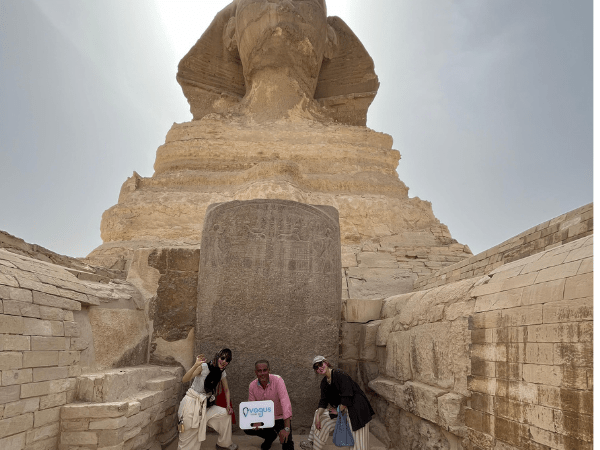.png)
Uncovering the Mystery: Uncovering the Great Sphinx of Giza
Uncovering the Mystery: Uncovering the Great Sphinx of Giza
Egypt's giant guardian, the Great Sphinx of Giza, lay under sand for centuries, the great head above ground just high enough as if guardedly keeping watch over an ancient past. Now one of the world's best-known landmarks, it was once hidden behind sand, nearly lost to the sands of time.
A Giant Lost to Time
It was 20 meters high and 73 meters long, and it was carved out from a single ridge of limestone, perhaps during the reign of Pharaoh Khafre (c. 2558–2532 BCE). Though its importance was cherished by the ancient Egyptians, over millennia of passage of time the hot desert winds and shifting sands gradually covered its form. In Roman times, only its head was still exposed—its massive paws, trunk, and tail buried completely under desert sand cover.
The First Attempts at Excavation
The earliest attempts at excavating the Sphinx were made by Pharaoh Thutmose IV (c. 1400 BCE). According to legend, the prince slept in the Sphinx's shade and had a dream in which the buried statue promised him the kingdom of Egypt if he would dig it out. Thutmose kept his word, and to commemorate the event, built the Dream Stele, which now stands between the Sphinx's paws.
But as the centuries passed, the sands returned, and the Sphinx was lost once more—until the 19th century.
Rediscovery in Modern Times
Early in the 1800s, when Egypt was engaging the attention of European scientists and scholars, the Sphinx was an object of renewed interest. Napoleon's expedition in 1798 sent artists and scientists to record the half-buried statue. But it was not until the 1920s that large-scale excavation work was done.
With the direction of Egyptian archaeologist Émile Baraize, a sustained effort was made to excavate the Sphinx. Over the course of over a decade, his team removed thousands of tons of sand—manually—finally revealing the Sphinx in its full form for the first time in recent times.
A Symbol of Endurance
What they discovered was astounding: a body of a great lion with a human head, which was thought to represent Pharaoh Khafre. Centuries buried under sand, yet the statue was well-preserved, a credit to ancient Egyptian craftsmanship and the deserts' protective shield.
Now, travelers from all over the world stand before the Sphinx, amazed at its grandeur, mystery, and quietness. But little do they know that, until a relatively short time ago, this marvel of the world was hidden deep beneath the very sands of the ground on which it now stands.
Did You Know?
The Sphinx may originally have been painted in bright colors—traces of red, blue, and yellow pigments were found.
The missing nose was likely destroyed between the 11th and 15th centuries, though its cause is not finally determined.
VIP tours offered these days allow tourists to stand between the Sphinx's paws, as Thutmose IV stood over 3,000 years ago.

-min.png)
-min.png)
.png)
-min.png)
.png)
